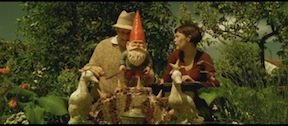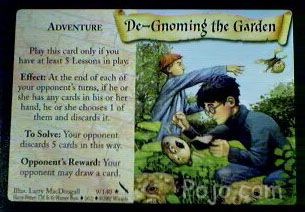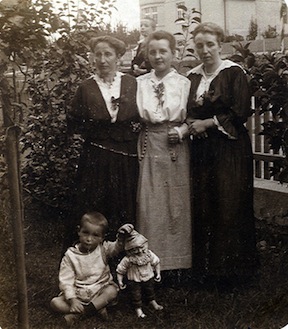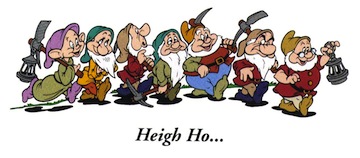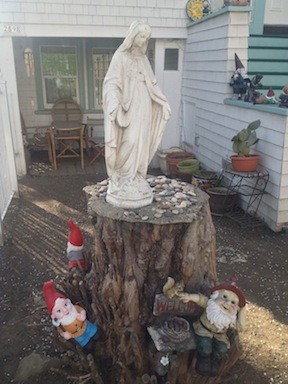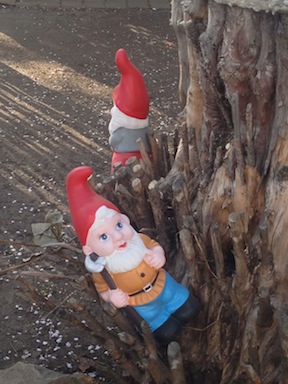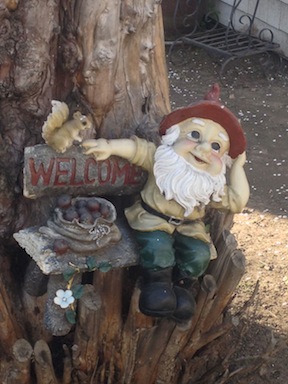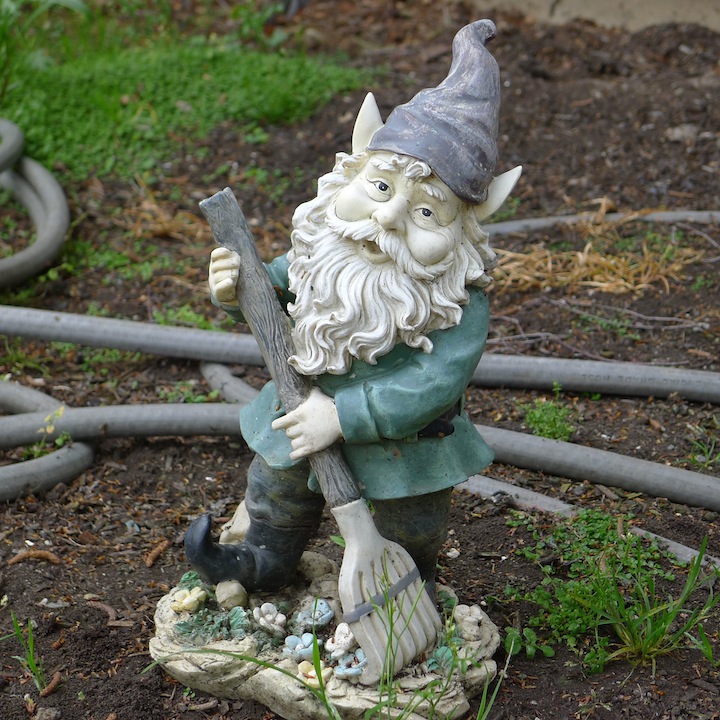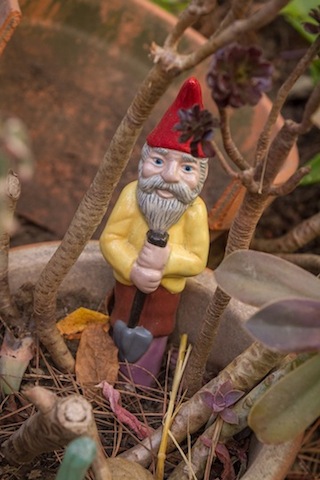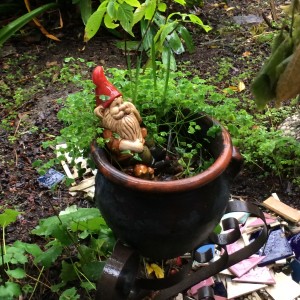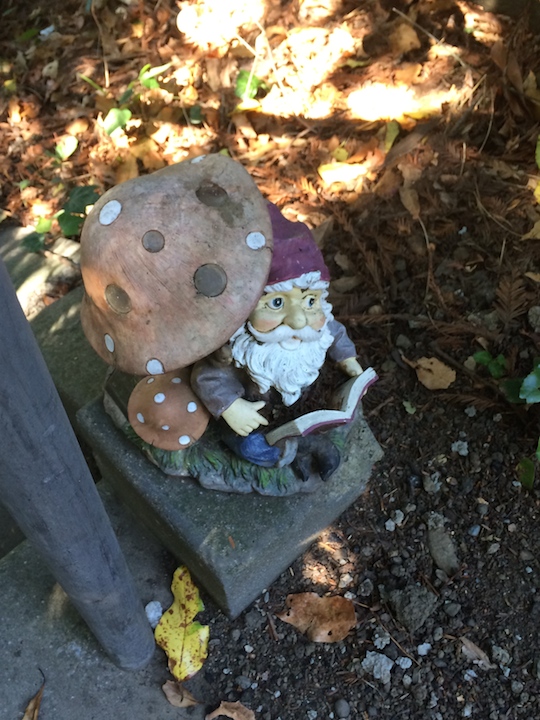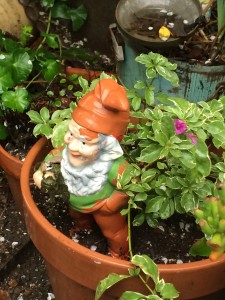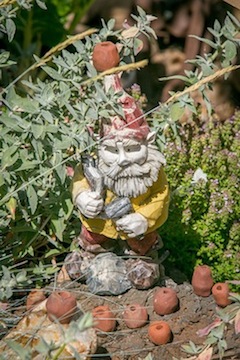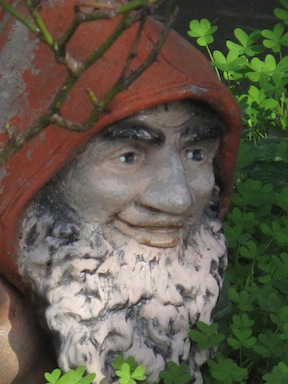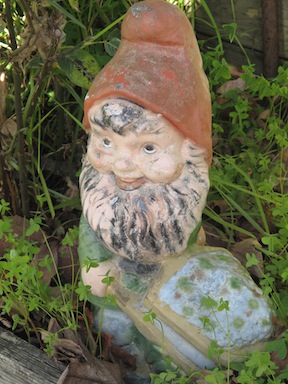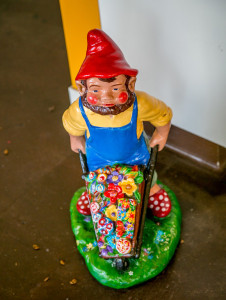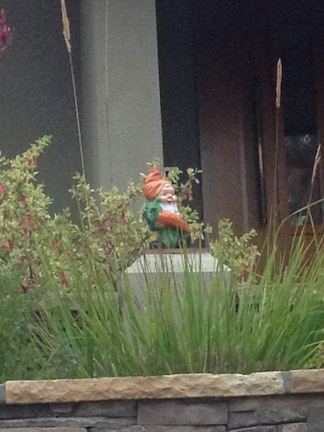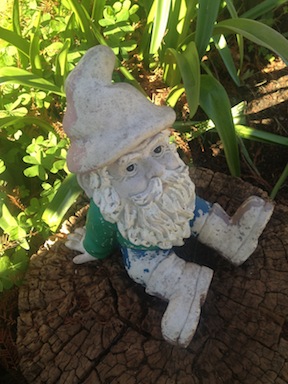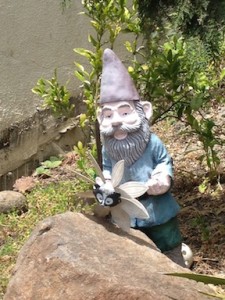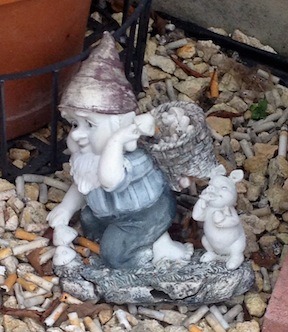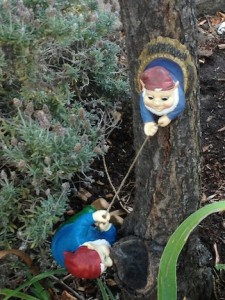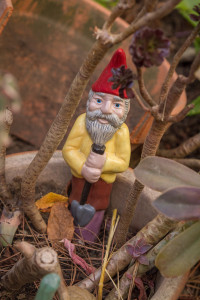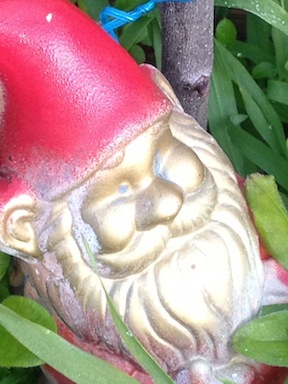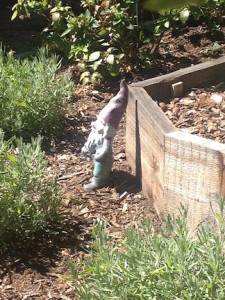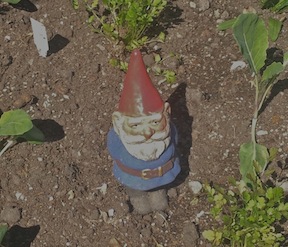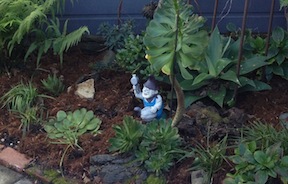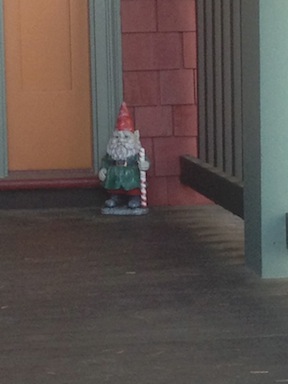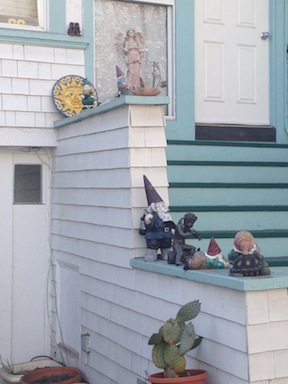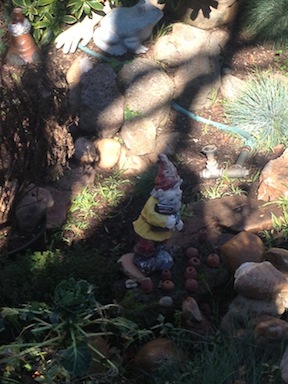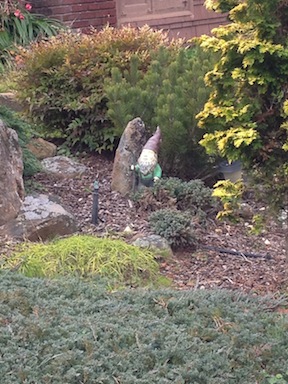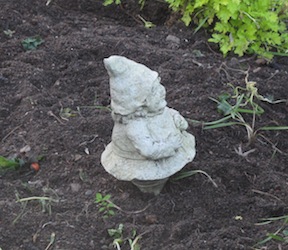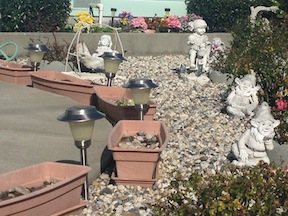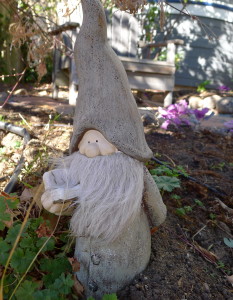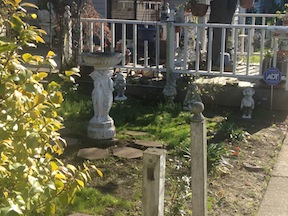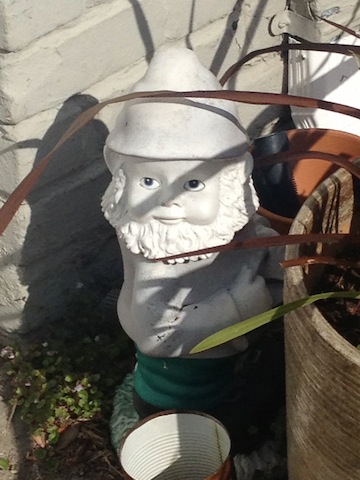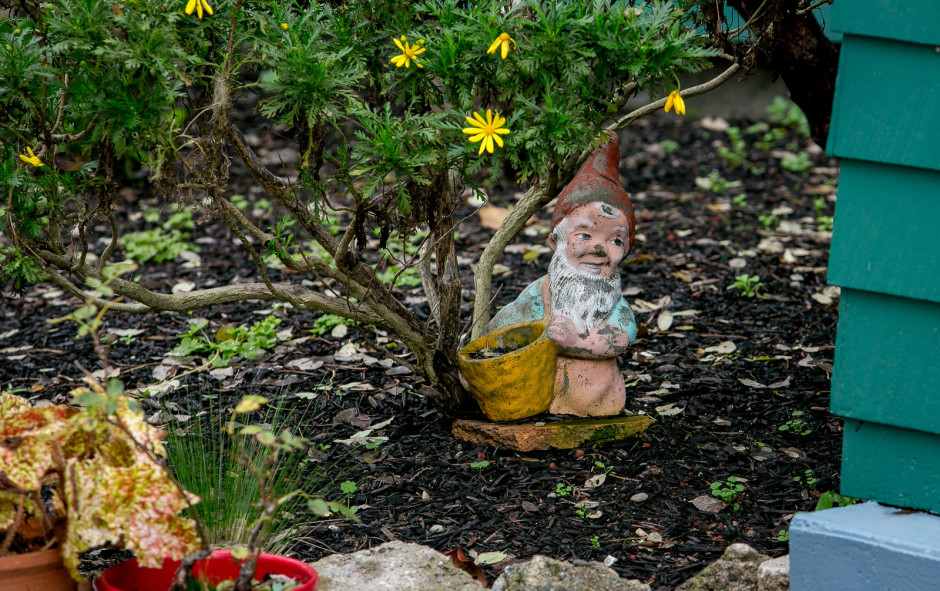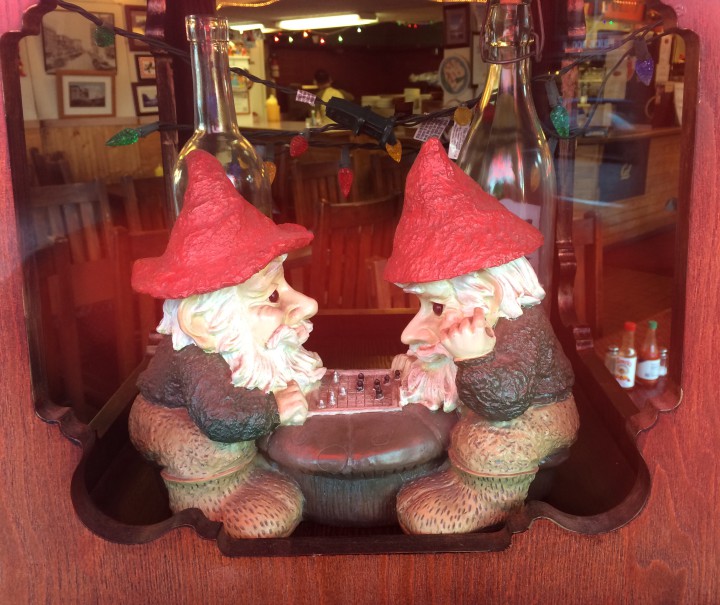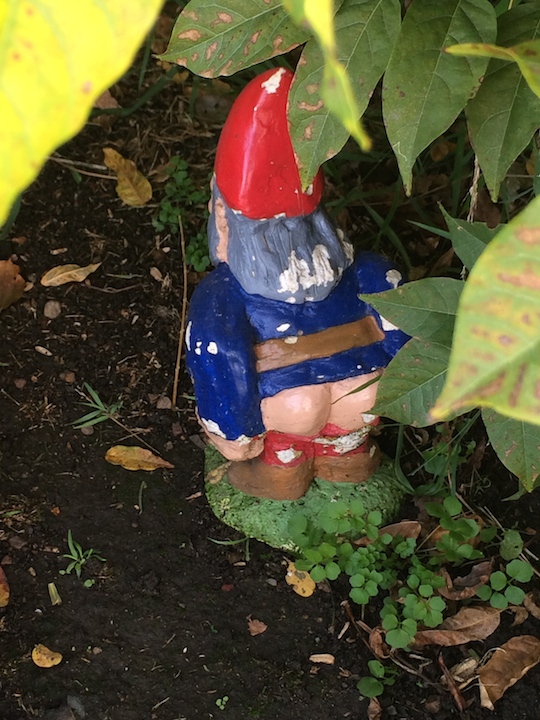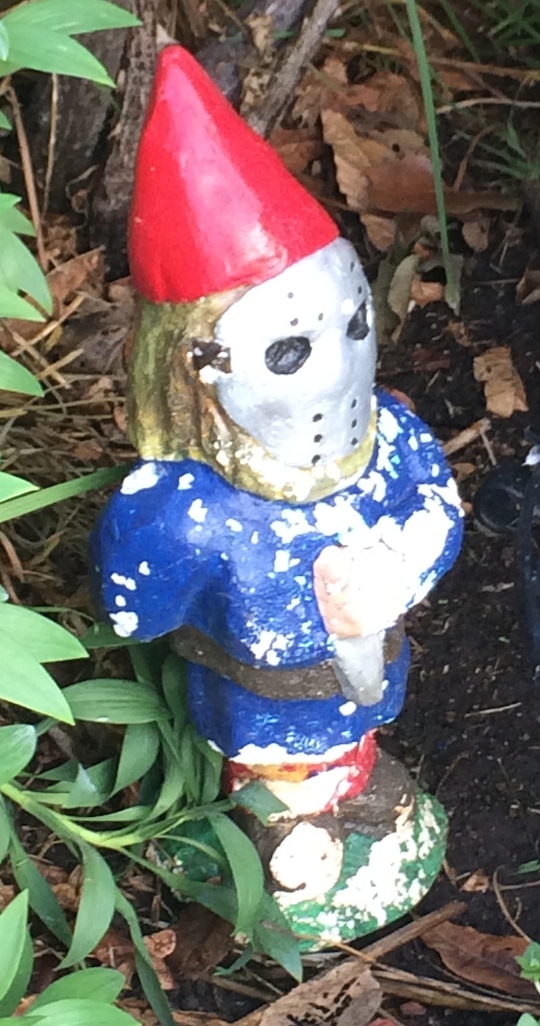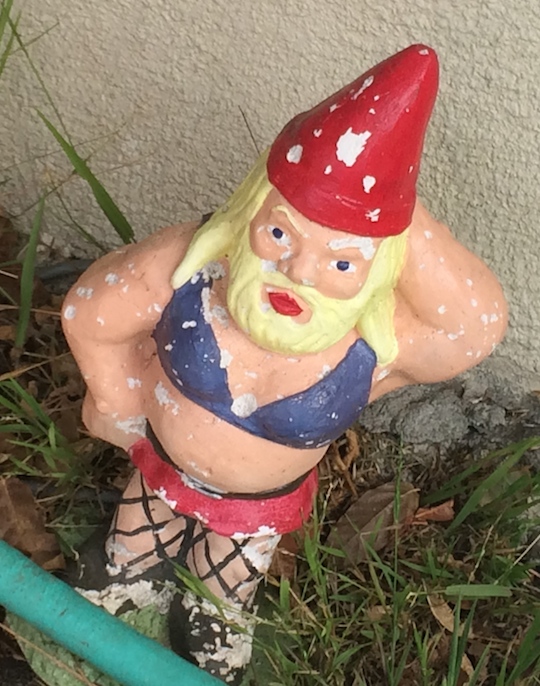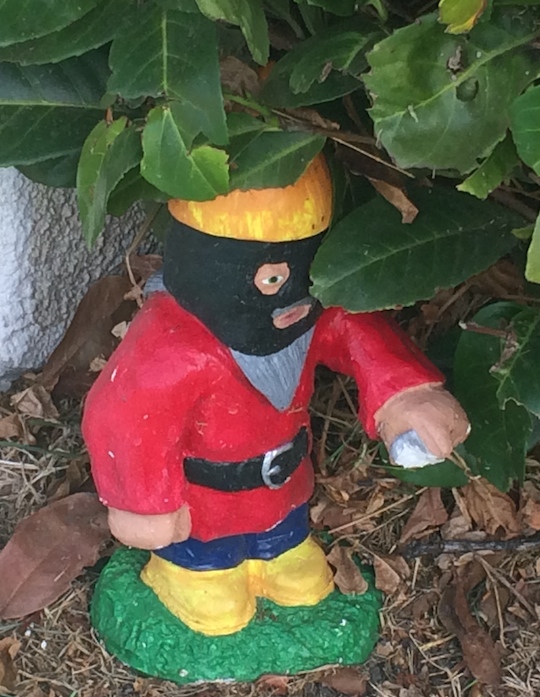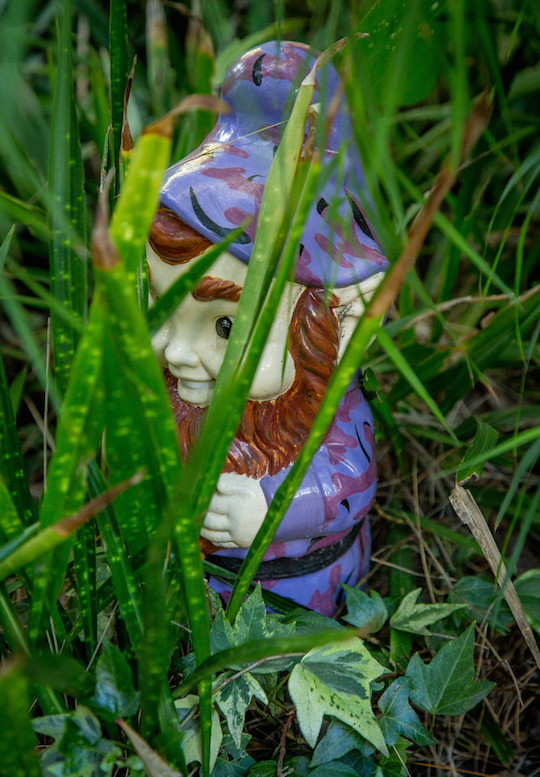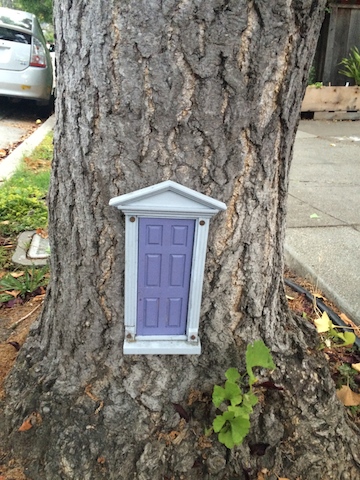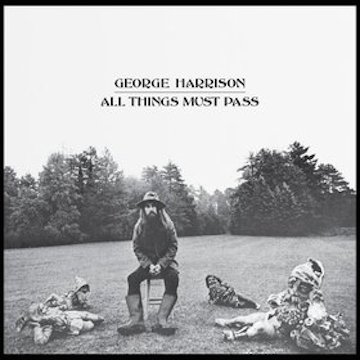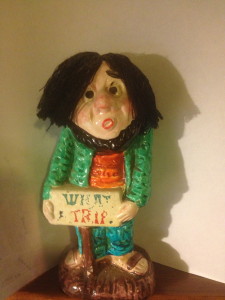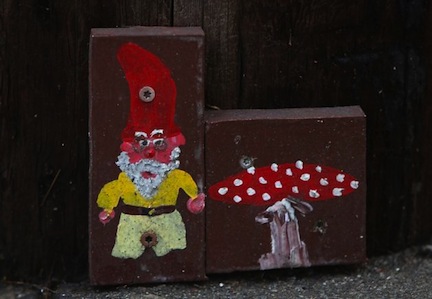When we think of garden gnomes, isn’t our first thought of the traveling gnome prank popularized in the 2001 French movie Amelie that we saw at the Albany Twin theater on lower Solano (yes, in Albany – not Berkeley)?
Or perhaps we think of the gnome infestations in Harry Potter and the de-gnoming of the garden, about as clever as it gets.
If we get analytical, though, the word that comes to mind when we think of garden gnomes is – kitsch. The OED, my life guide, defines kitsch as “art or objects d’art characterized by worthless pretentiousness.” A tad harsh, but I guess fair enough. More importantly here, though, kitsch is material culture and it can be and often is quirky. Hence the gnomes here.
Gnomes populate romantic poetry of the 18th century and 19th century fairy tales – earth-dwelling little people, slightly nasty, guardians of the earth’s treasure. Victorian England saw garden gnomes, which were not quite as cheerful as the garden gnomes we think of today. Why so cheerful now? What changed? One word:
Disney. The gnome has been Disneyfied and today is portrayed in the style of Disney’s 1937 Snow White. And if you really need to hear the seven dwarfs singing their Work song, here it is.
Meanwhile, back in Berkeley – we got us some gnomes and we are almost there, to their photos. But – first – a song? My grandmother sang to us in German. In the 1890s she and her brothers and sisters performed Hansel und Gretel at Christmas for their parents. She sang the song of the little man in the deep dark woods, Ein Männlein Steht im Walde to us when we stayed with her in Bryn Mawr. I invite you to listen to the song, Act 2, Scene 1, and check out Berkeley’s best garden gnomes.
Photogenic little buggers, aren’t they?
Most gnomes are true to form, but there is occasionally a rogue gnome. Or, in the case of this posse from Grant Street, a gang of rogue gnomes.
Here is a more fashionable non-traditional gnome, sporting psychedelic cammo gear:
Where do they sleep? Good question. Here is one answer:
I have more photos and need to re-shoot others. Since this has turned into an above-average reflection on the place of gnomes and garden gnomes in popular culture, what kind of a person would I be if I didn’t link to Pink Floyd’s song, “The Gnome,” off of their first album, The Piper at the Gates of Dawn, and David Bowie’s “Laughing Gnome?” Our family’s garden gnome, Willard, would for one never forgive me if I hadn’t done that. And I cannot not mention the album cover of George Harrison’s All Things Must Pass.
Lastly, for the moment – the terms “Utah” and “agriculture” and “sense of humor” don’t find themselves in the same sentence all that often. Here, however, they do. A five-minute PSA on “Gnome Management in the Garden” brought to us from Utah State University Agricultural Extension Service.
No more gnomes for now. Just my “What a Trip” hippie friend, who has more than once been mistaken for a gnome, but who here and now signals that the page is done.
P.S. We confine ourselves for the most part to Berkeley. Gnomes do not confine themselves to Berkeley, and the gnomes of Oakland were in the news in early 2013. An anonymous artist attached more than 2,000 gnome paintings to utility poles. They looked like this:
PG&E considered them a potential obstruction on their poles. PG&E announced a gnome-removal program. Oakland’s Friends of Gnomes rose up in arms. PG&E relented. The gnomes stay. More details? Read what the Chronicle wrote.


